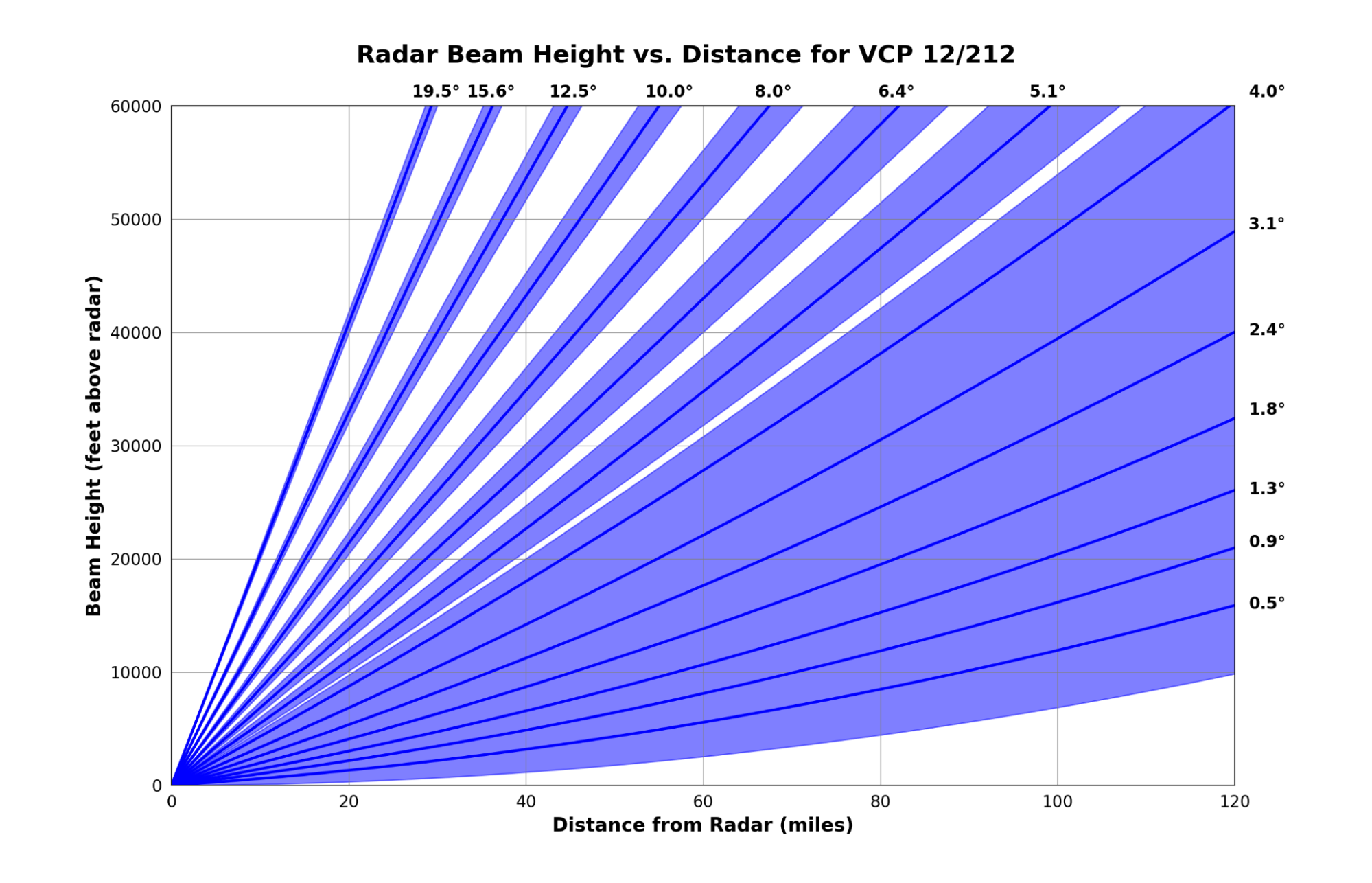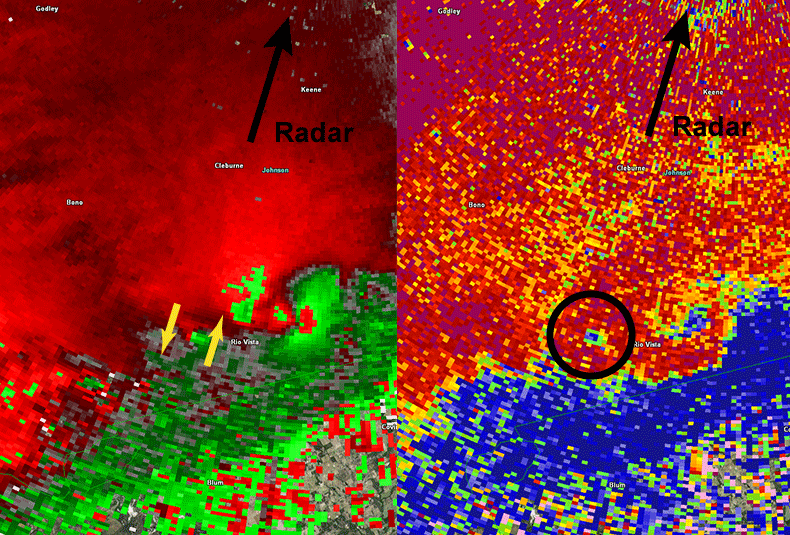The word radar comes from the acronym radio detection and ranging. As the name implies, radars use radio waves to determine the distance and velocity of the targets they hit. A radar system usually consists of a transmitter to send out radio signals and a receiver to catch any reflected energy from targets. In the case of the WSR-88D, the transmitting and receiving antenna is the same.

WSR-88D
The WSR-88D is a pulsed Doppler radar. This means that the transmitter sends out very brief pulses of radio waves rather than a continuous stream of waves. By calculating the amount of time it takes for a pulse to be transmitted, strike a target, and return to the radar antenna, the system can determine the range (or distance) of the target from the radar.
In addition to range information, the WSR-88D is a Doppler radar, meaning that it can determine velocity of a target. When the radar transmits a pulse, it keeps track of the phase and amplitude (shape, position, and form) of that pulse. When the pulse hits a moving target, the phase of the returned wave is “shifted” or changed. This phase shift is used to determine the velocity of the target.
The phase shift is similar to the "Doppler shift" observed with sound waves – sound from an object moving toward your location is higher pitch due to compression (a change in the phase) of sound waves. As an object moves away from your location, sound waves are stretched, resulting in a lower frequency.
You may have heard this effect from an emergency vehicle or train. As the vehicle passes your location, the siren or whistle's pitch lowers.

Radar pulses are transmitted away from the radar at the speed of light, but they are very short in duration. The radar has two operating modes: short pulse and long pulse. The majority of the time, the radar will operate in short pulse mode. Each transmitted pulse only lasts 1.57 millionths of a second (0.00000157) and is repeated around 1300 times per second. In between each transmitted pulse, the radar listens for returns. The extremely short time that the transmitter is actually on means that the radar spends the vast majority of its time listening for returns. For every hour, the radar spends a little more than 7 seconds actually transmitting pulses. The rest of the time, 59 minutes and 53 seconds, is spent listening for returns.
In an effort to scan as much of the atmosphere as possible as quickly as possible, the WSR-88D employs a scanning strategy in which the antenna will raise through as many as 15 predefined elevation angles. These different elevation angles allow meteorologists to interrogate storms at different heights above the ground as opposed to just one. Meteorologists can observe rapidly developing storms or collapsing storms using this scanning method. A complete set of elevation scans is called a volume scan and the number of elevations is determined by the volume coverage pattern (VCP).
Take it to the MAX! Radar Beams
Take it to the MAX! Anomalous Propagation

Dual-Polarization
In 2012, the network of WSR-88Ds was upgraded to dual polarization. The electric field of a transmitted pulse oscillates, or moves back and forth. The "dual-pol" upgrade provides a much more informative two-dimensional picture because it can detect both horizontal and vertical oscillations of the pulse.
Dual-pol radar helps NWS forecasters clearly identify rain, hail, snow, the rain/snow line, and ice pellets, improving forecasts for all types of weather.
Another important benefit is that dual-pol more clearly detects airborne tornado debris (the debris ball), allowing forecasters to confirm when a tornado is on the ground and causing damage so they can more confidently warn communities in its path. This is especially helpful at night when ground spotters are unable to see the tornado.
Take it to the MAX! Dual Polarization

These two images show how dual-polarization helps NWS forecasters detect a tornado that is producing damage.
The left image shows how the Doppler radar can detect rotation. Between the two yellow arrows, the red color indicates outbound wind, while the green color indicate inbound wind, relative to the location of the radar. Prior to dual-polarization, all we could detect was this rotation near the Earth's surface. Unless there were storm spotters outside watching the storm, we would not know for certain if that the rotation on the radar was a tornado.
The right image shows how dual-polarization information helps detect debris picked up by the tornado. This gives us confidence that there is a tornado in that location at that time.

